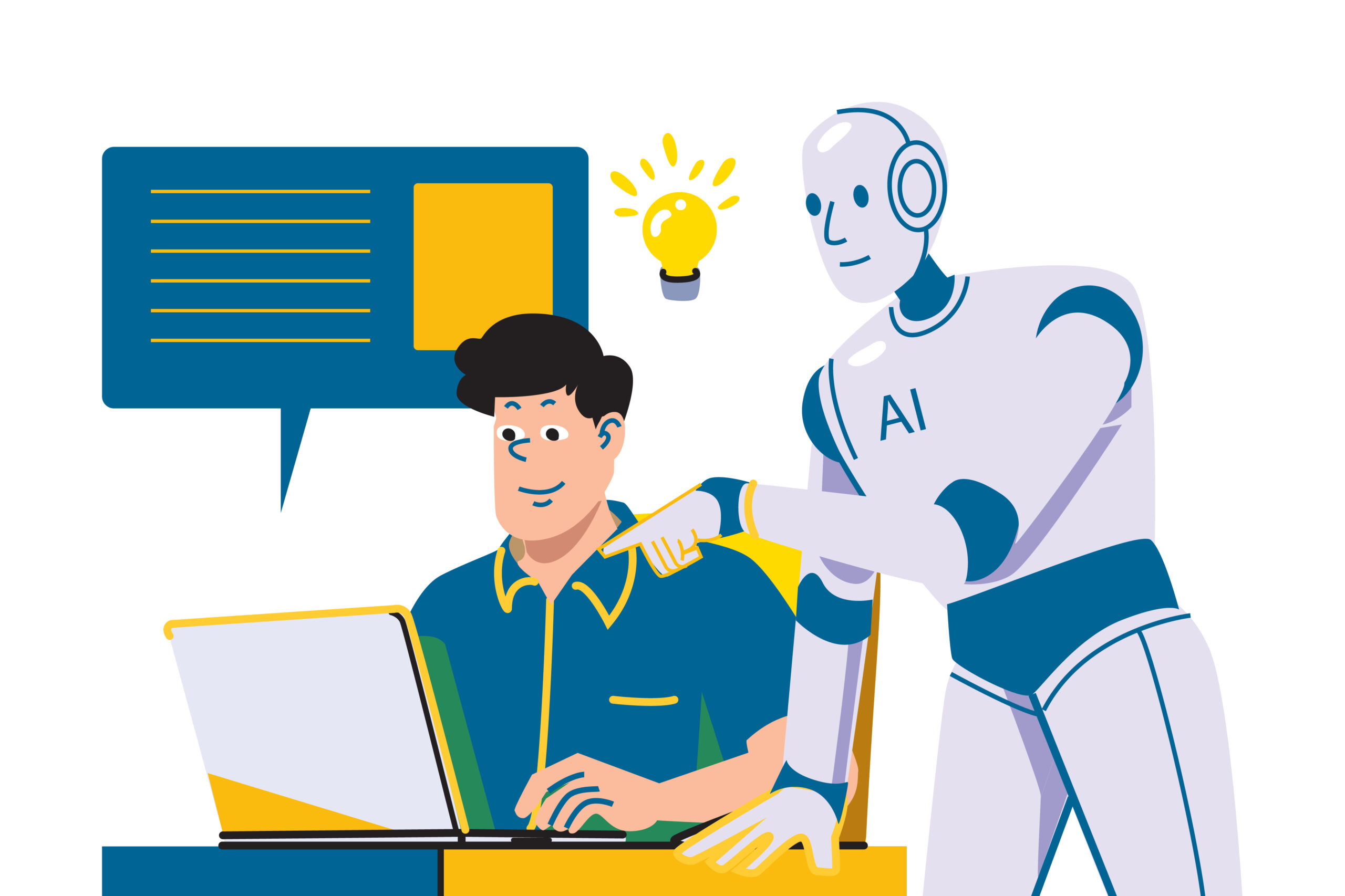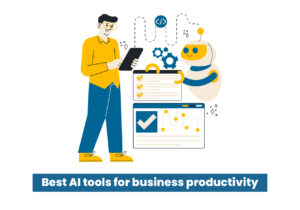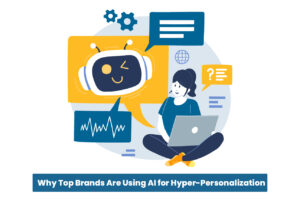Marketing has never been easy. From decoding customer behavior to keeping up with trends and managing content calendars, the workload is non-stop. But now imagine a tireless assistant that never sleeps, analyzes mountains of data in seconds, and always has a data-backed suggestion ready. Sounds like a dream, right?
Welcome to the age of the Human-AI Partnership, a revolution that’s transforming how marketers work, think, and win.
When Human Creativity Meets Machine Intelligence
Do you know what humans are brilliant at? Emotional intelligence, storytelling, intuition, empathy, and thinking outside the box. And you know what machines are built for? Speed, data crunching, pattern recognition, and automation.
Now, combine those two forces, and what do you get? A Human-AI Partnership that empowers marketers to reach audiences with precision and heart.
This is not about AI replacing humans. It’s about human-AI collaboration in marketing that enhances everything we already do, helping us do it smarter, faster, and better.
Problem with Traditional Marketing
Before diving into how AI helps, let’s address the elephant in the room: traditional marketing methods are struggling to keep up.
- Customer journeys are no longer linear.
- Audiences expect personalization at every touchpoint.
- Content demand has exploded.
- Competition is fierce and global.
Marketers today are expected to wear 10 hats at once: strategist, writer, designer, data analyst, ad expert, SEO nerd, community manager, and still stay creative. That’s where the Human-AI Partnership becomes a game-changer.
Why Marketers Need AI More Than Ever?
Here’s the truth: AI for marketers is no longer a luxury. It’s a necessity.
Imagine trying to manually analyze behavior across millions of customer interactions or test dozens of ad variants to find the winner. You’d burn out before lunch. But with AI-powered marketing strategies, marketers can:
- Predict customer behavior
- Personalize content in real-time
- Optimize ad spend automatically.
- Segment audiences intelligently
- Generate insights without hours of digging.
That’s not the future; it’s happening right now. And it’s all powered by the Human-AI Partnership that respects human brilliance and augments it with machine efficiency.
Examples of Human and AI Teamwork in Action
Let’s break down how this partnership works in the real world:
1. Content Creation & Curation
Humans brainstorm the big idea.
AI suggests high-performing keywords, analyzes trending topics, and even recommends titles based on performance data.
Together, this Human and AI teamwork ensures the content is creative and strategic.
2. Ad Campaign Optimization
Humans develop the campaign message and creativity.
AI A/B tests headlines, predicts which visuals perform best, and adjusts ad spending in real time based on results.
You get the perfect blend of emotion + precision. That’s the magic of the Human-AI Partnership.
3. Customer Journey Mapping
Humans understand motivations, fears, and desires.
AI tracks behavioral patterns and segments customers into personalized journeys.
The result? Campaigns that feel deeply personal because they are.
Emotional Intelligence Gap: Humans Still Lead
AI might process data better, but it can’t feel. It can’t understand context the way we do. It can’t make ethical decisions or tell a heartfelt story that gives someone goosebumps.
That’s why human-AI collaboration in marketing is so powerful: AI does the heavy lifting, while humans steer the ship with creativity, empathy, and emotional insight.
The brands that are thriving today are the ones where this balance is just right.
How AI Supports, Not Replaces, Human Marketers
There’s a common fear that AI will steal marketing jobs. But in truth, it’s helping marketers:
- Eliminate repetitive tasks
- Focus on strategy instead of spreadsheets
- Improve targeting and ROI
- Make smarter, faster decisions
- Deliver better experiences to customers
In other words, it’s giving marketers their time (and sanity) back. That’s why the Human-AI Partnership is gaining massive momentum across industries.
Rise of AI-Powered Marketing Strategies
AI is already baked into the tools we use every day, even if we don’t realize it. Platforms like Meta, Google Ads, and HubSpot all use AI to:
- Suggest optimal post-timings
- Identify best-performing content
- Automate customer journeys
- Flag engagement drops
Marketers who embrace these AI-powered marketing strategies are seeing double-digit boosts in ROI, engagement, and conversions simply because they’re letting AI do what it does best.
And when do humans take those insights and act on them with creativity and heart? That’s when marketing magic happens.
Micro-Moments That Matter
In the digital world, micro-moments are everything: those tiny, real-time decisions people make that can lead to a purchase, sign-up, or bounce.
AI is the key to recognizing these micro-moments:
- When someone’s searching for a product
- Comparing options
- Feeling uncertain
- Ready to buy
With AI, marketers can deliver hyper-personalized messages exactly when they matter most. That’s what data-driven brand transformation is all about, and it’s only possible through the Human-AI Partnership.
Don’t Fear the Tech, Leverage It
Think of AI as your co-pilot. It’s not here to replace your voice; it’s here to help amplify it. Marketers who resist this shift will get left behind. Those who embrace it will thrive.
Why? Because AI is already setting the pace. But it’s still humans who set the tone.
And let’s not forget: even the most advanced AI needs the human touch to stay relevant, empathetic, and honest.
The Future of Marketing Is Human + Machine.
Here’s the big idea: The future isn’t “AI vs. Human.” It’s “AI with Human.”
We’re entering a golden age of marketing where Human collaboration in marketing will be the norm, not the exception. Marketers will be judged not just by how well they think, but also by how smartly they use tools that believe with them.
The marketers who will win in 2025 and beyond won’t be the ones with the flashiest slogans or the most significant budgets. They’ll be the ones who embrace the Human-AI Partnership, using AI to work smarter, connect more deeply, and innovate faster.
This isn’t about choosing between humans and machines. It’s about making space for both.
When the human brain and artificial intelligence join forces, the results aren’t just impressive; they’re unstoppable.
The Human-AI Partnership is not just about efficiency; it’s about evolution. And it’s happening whether you’re ready or not.
How Prismatic Digital Solutions Can Help?
At Prismatic Digital Solutions, we don’t just understand the Human-AI Partnership; we live it every day.
Our team blends human creativity with AI-powered insights to deliver custom digital marketing strategies that drive results. Whether it’s innovative ad campaigns, content strategies powered by AI, or personalized email journeys, we ensure your brand stays ahead of the curve and the competition.
FAQs
Q1: Is AI going to replace human marketers?
Not at all. AI supports human marketers by handling repetitive and data-heavy tasks. It enhances creativity, but it doesn’t replace it.
Q2: How can small businesses benefit from the Human-AI Partnership?
Even on a small budget, tools like ChatGPT, Grammarly, Canva, or Mailchimp use AI to boost productivity and personalize marketing.
Q3: What’s the most significant advantage of AI for marketers?
Speed and data accuracy. AI can process user behavior, trends, and performance more efficiently than humans, enabling marketers to act quickly.
Q4: What’s an example of human-AI collaboration in marketing?
A content strategist (human) creates a campaign idea, and an AI tool (machine) helps optimize it by analyzing top-performing keywords and headlines.
Q5: Why is the Human-AI Partnership considered the future of marketing?
Because it balances logic with empathy and automation with strategy, and that’s precisely what today’s customer journey demands.


